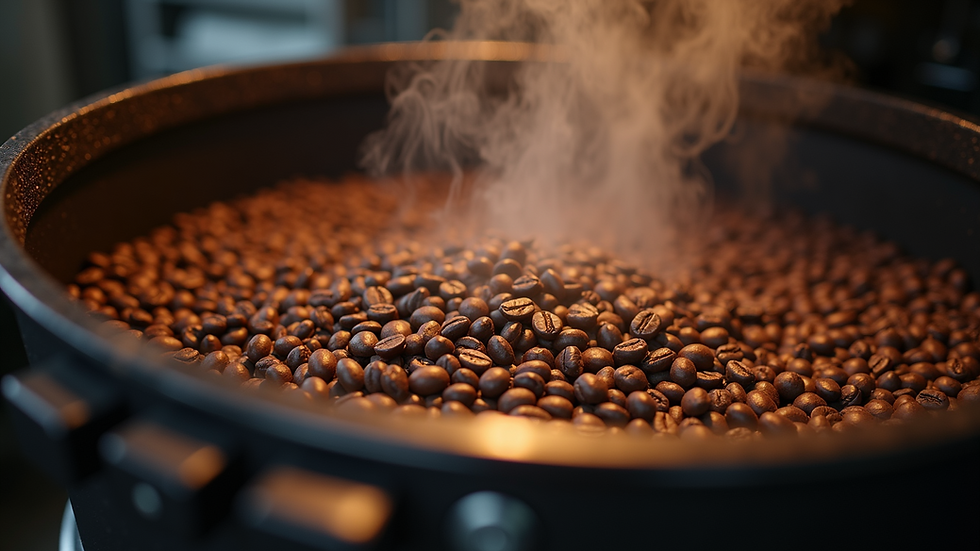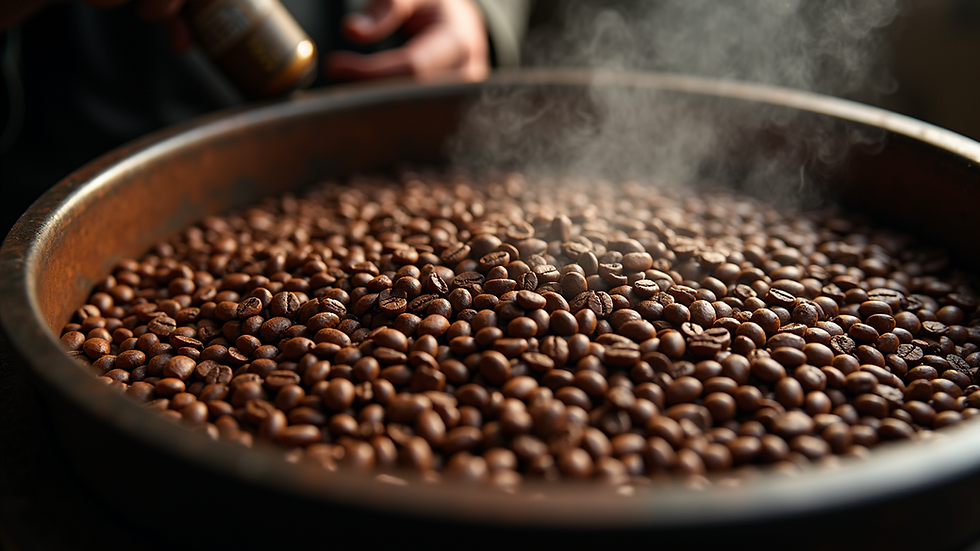Advanced Coffee Roasting Techniques for Perfect Brews
- Barking Irons
- Aug 5
- 4 min read
If you’re anything like us, the magic of coffee starts long before that first sip. It begins with the beans, and more importantly, how those beans are roasted. Over the years, we've dived deep into the world of roasting, experimenting with different methods to unlock the best flavors. And let us tell you, mastering advanced coffee roasting tips can completely transform your brew. Whether you’re roasting at home or just curious about the craft, we are excited to share some insights that have made our coffee moments truly special.
Why Advanced Coffee Roasting Tips Matter
Roasting coffee is an art and a science. It’s not just about heating beans until they’re brown. The process affects aroma, acidity, body, and flavor complexity. When we first started roasting, we thought any roast would do. But as we learned more, we realized that precision and control are everything.
Advanced coffee roasting tips help you:
Highlight unique bean characteristics
Avoid common roasting mistakes like burning or underdeveloping
Tailor the roast to your preferred brewing method
Create consistent batches every time
For example, we once roasted a batch of organic beans from Peru using a slow, low-temperature roast. The result? A smooth, chocolatey cup with subtle fruity notes that we never expected. That’s the power of dialing in your roast.

The roasting process in action, where magic begins.
Exploring Advanced Coffee Roasting Tips
Let’s get into some practical tips that have helped us elevate our roasting game:
1. Master Your Roasting Equipment
Whether you’re using a home roaster or a commercial drum roaster, understanding your machine’s quirks is key. I recommend:
Calibrating temperature sensors regularly to avoid inaccurate readings.
Monitoring airflow because it affects how heat transfers to the beans.
Keeping your roaster clean to prevent old oils from affecting flavor.
We remember the first time we neglected cleaning my roaster. The next batch tasted smoky and off. Lesson learned!
2. Control Your Roast Profile
A roast profile is basically a roadmap of temperature changes over time. Advanced roasters tweak this profile to coax out specific flavors. Here’s what we focus on:
Drying phase: Start slow to remove moisture without scorching.
Maillard reaction: This is where sugars and amino acids react, creating complex flavors.
First crack: The beans literally crack open, signaling the start of light roast.
Development time: How long you let the beans roast after first crack affects acidity and body.
By adjusting these phases, we can make the same beans taste brighter or more chocolatey depending on our mood.
3. Use Data Logging and Sensory Evaluation
We started using software to log temperature and time data during roasting. It’s like having a detailed diary of each batch. But numbers aren’t everything. We always cup (taste) our coffee after roasting to check for:
Aroma
Acidity
Sweetness
Bitterness
Body
This combo of data and sensory feedback helps us refine m technique batch after batch.

Evaluating coffee flavors through cupping to perfect the roast.
What are the different types of roasting techniques?
Understanding the different roasting techniques is essential to finding your style. Here’s a quick rundown of the main types I’ve experimented with:
Drum Roasting
This is the classic method where beans tumble in a rotating drum heated by gas or electric elements. It’s great for even roasting and is widely used by professionals. I love how it allows precise control over heat and airflow.
Air Roasting (Fluid Bed)
Beans are roasted by hot air blowing from below, causing them to float. This method produces a cleaner, brighter cup but can be tricky to master. I tried this once and noticed a distinct crispness in the coffee.
Hot Air Roasting (Popcorn Popper Style)
A fun, budget-friendly way to roast small batches at home. It’s not as consistent but perfect for beginners wanting to experiment.
Infrared Roasting
A newer technique using infrared heat for fast, even roasting. I haven’t tried this yet, but it’s gaining popularity for its energy efficiency.
Each method brings out different flavor profiles, so don’t be afraid to try them all!

Drum roasting in progress, a traditional and reliable method.
Tips for Roasting Organic, High-Quality Beans
When working with organic beans, like those from Barking Irons Roastery, you want to respect their natural qualities. Here’s what I keep in mind:
Start with fresh, green beans: Organic beans often have more delicate flavors that can be lost if the beans are old.
Avoid over-roasting: Dark roasts can mask the subtle notes of organic beans. I usually aim for a medium roast to preserve complexity.
Experiment with roast length: Sometimes a slightly longer development time brings out sweetness without bitterness.
Keep detailed notes: Organic beans can vary batch to batch, so tracking your roast profiles helps maintain consistency.
By applying these tips, we've been able to highlight the earthy, floral, and fruity notes that make organic coffee so special.
Bringing It All Together: Your Roasting Journey
Roasting coffee is a journey, not a destination. Every batch teaches you something new. I encourage you to:
Start small: Roast small batches to test different profiles.
Be patient: It takes time to develop your palate and technique.
Join a community: Sharing experiences with fellow coffee lovers can be inspiring.
Use resources: Check out coffee roasting techniques from experts who share their passion and knowledge.
Remember, the goal is to enjoy the process as much as the cup. There’s something deeply satisfying about crafting your perfect roast and savoring the results.
We hope these advanced coffee roasting tips inspire you to take your coffee game to the next level. Whether you’re roasting for yourself or sharing with friends, the joy of a well-roasted bean is truly unmatched. So grab your roaster, some organic beans, and start experimenting. Your perfect brew is waiting!











Comments